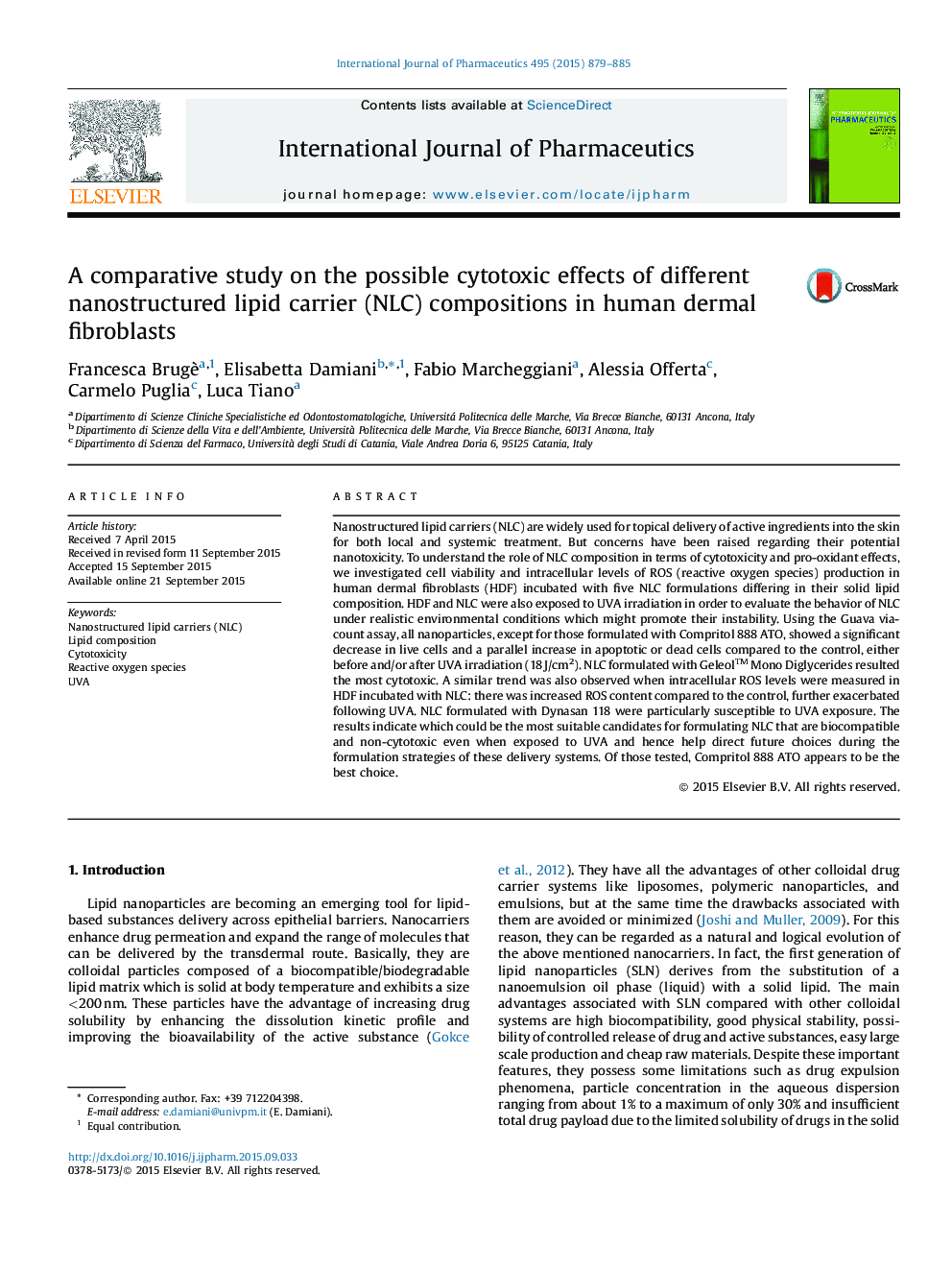| Article ID | Journal | Published Year | Pages | File Type |
|---|---|---|---|---|
| 2501221 | International Journal of Pharmaceutics | 2015 | 7 Pages |
Nanostructured lipid carriers (NLC) are widely used for topical delivery of active ingredients into the skin for both local and systemic treatment. But concerns have been raised regarding their potential nanotoxicity. To understand the role of NLC composition in terms of cytotoxicity and pro-oxidant effects, we investigated cell viability and intracellular levels of ROS (reactive oxygen species) production in human dermal fibroblasts (HDF) incubated with five NLC formulations differing in their solid lipid composition. HDF and NLC were also exposed to UVA irradiation in order to evaluate the behavior of NLC under realistic environmental conditions which might promote their instability. Using the Guava via-count assay, all nanoparticles, except for those formulated with Compritol 888 ATO, showed a significant decrease in live cells and a parallel increase in apoptotic or dead cells compared to the control, either before and/or after UVA irradiation (18 J/cm2). NLC formulated with Geleol™ Mono Diglycerides resulted the most cytotoxic. A similar trend was also observed when intracellular ROS levels were measured in HDF incubated with NLC: there was increased ROS content compared to the control, further exacerbated following UVA. NLC formulated with Dynasan 118 were particularly susceptible to UVA exposure. The results indicate which could be the most suitable candidates for formulating NLC that are biocompatible and non-cytotoxic even when exposed to UVA and hence help direct future choices during the formulation strategies of these delivery systems. Of those tested, Compritol 888 ATO appears to be the best choice.
Graphical abstractFigure optionsDownload full-size imageDownload high-quality image (156 K)Download as PowerPoint slide
